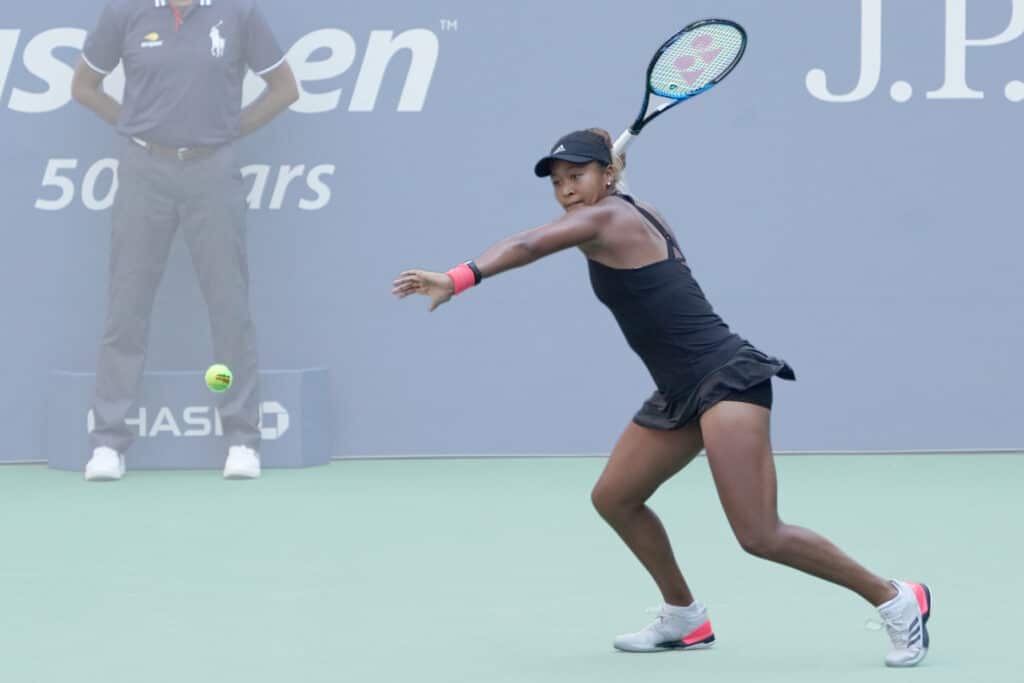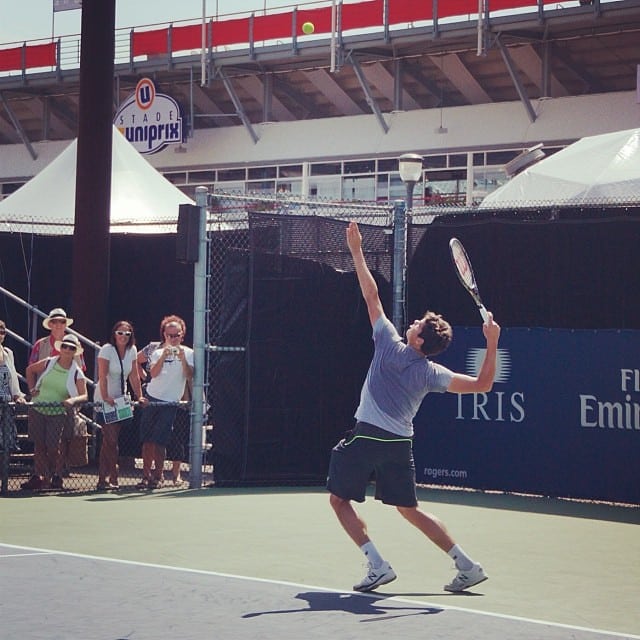1 – Introduction
In the world of tennis, there’s a shot that holds a special place: the tennis serve. It’s not just a routine start to a point, but a game-changer that can make all the difference. Imagine this: a powerful serve that’s mastered can turn the tide of a match, leaving your opponent struggling to keep up. Welcome to the art of mastering the tennis serve, a skill that goes beyond hitting the ball over the net.
Think of your serve as the opening statement in a conversation with the court. It’s not just about getting the ball in play; it’s about setting the tone, asserting control, and dictating the flow of the game. By mastering the serve, you’re not only adding an ace to your arsenal but also giving yourself a strategic advantage.
But it’s not just about the scoreboard. Mastering the serve can be a game-changer for your overall performance. It’s like discovering a secret key that unlocks your full potential on the court. A strong serve not only earns you free points but also puts pressure on your opponent, giving you the upper hand from the very first moment.
So, whether you’re a beginner dipping your toes into tennis or someone looking to take their game to the next level, this journey to master the tennis serve is a path worth treading. In the upcoming guide, we’ll break down the mechanics, offer practical tips, and dive into the nuances that make a serve truly impactful. Get ready to not just serve, but to ace your way to success on the court!
2 – The Basics of a Tennis Serve
A. Grip and Hand Placement
When it comes to serving in tennis, the grip you use and how you place your hands on the racket can make a world of difference. There are three main types of grips: the continental grip, the Eastern grip, and the Western grip. Each grip has its own advantages and drawbacks, so let’s break them down.
– Continental Grip: This grip involves placing the base knuckle of your index finger on the top bevel of the racket handle. It’s a versatile grip that works well for both flat and slice serves. However, it might be a bit challenging for beginners due to its unconventional feel.
– Eastern Grip: With this grip, your base knuckle of the index finger rests on the third bevel of the racket handle. The Eastern grip offers a good balance between power and control, making it a popular choice for beginners. It’s suitable for various types of serves.
– Western Grip: This grip requires placing your base knuckle of the index finger on the fifth bevel of the racket handle. The Western grip is commonly used for topspin serves, as it allows you to get more spin on the ball. It might be more advanced, so beginners should approach it with caution.
No matter the grip you choose, the key is to find what feels comfortable and natural for you. Once you’ve selected your grip, it’s time to focus on hand placement. Ensure that your hands are relaxed but firm on the racket. This provides a solid foundation for a successful serve.
B. Stance and Footwork For The Tennis Serve
Your stance and footwork lay the groundwork for a strong serve. Start in the ready position, where your feet are shoulder-width apart, and your body is angled sideways to the net. As you begin your serve, your front foot should point towards the net post, while your back foot is perpendicular to the baseline.
Maintaining balance is crucial. Your weight should be evenly distributed between both feet, allowing you to explode into the serve with power. Keep in mind that the stance might evolve as you get more comfortable, but the initial setup ensures a strong base to build upon.
C. Ball Toss
The ball toss is the launchpad for your serve. Holding the ball with your non-dominant hand, raise your tossing arm and extend it upward. The ball should be released just above eye level. The goal is to create a consistent toss that lands within your striking zone.
To achieve a reliable toss, practice is key. Start by tossing the ball vertically, making sure it falls in the same spot every time. As you get more consistent, integrate it into your serve motion. Remember, a well-placed toss sets the stage for a well-executed serve.
In conclusion, mastering the basics of a tennis serve—grip, stance, footwork, and ball toss—forms the foundation of a successful serve. Experiment with different grips to find what suits you best, establish a balanced stance for power, and refine your ball toss through consistent practice. By honing these fundamental elements, you’ll be on your way to developing a reliable and effective tennis serve.
3 – The Tennis Serve Motion
In the art of serving in tennis, mastering the serve motion is like fine-tuning a musical instrument. It’s the heart of your game, where power, precision, and finesse come together to create a winning shot. Let’s dive into the serve motion and break down its key components to help beginners ace this essential skill.
A. Backswing: Finding Flow and Relaxation
As you step onto the court, the backswing initiates the dance of the serve. It’s a graceful motion, one that demands relaxation and fluidity. Imagine holding a brush, not a racket, and gently sweeping it back. Feel the rhythm of your body and racket syncing up. This fluid backswing is your canvas for a beautiful serve.
To position your racket just right, focus on a few cues. Let your non-dominant hand guide the racket’s tilt, setting it up like a painter’s palette. As you do, the racket face should open slightly to the side. This positions you for a solid trophy pose.

B. Trophy Position: Your Moment of Stillness
The trophy position, akin to a ballet dancer’s mid-pose, marks a crucial pause before the crescendo. As you raise the racket to the trophy position, imagine you’re holding an actual trophy. Your racket hand should appear as if you’re showing off your prize to the audience. Align your arm and body, ensuring they’re in harmony and ready to unleash power.
Now, the spotlight turns to power generation.

C. Power Generation: Unleashing the Orchestra
Generating power in a tennis serve is like conducting an orchestra – it requires synchronized movement. Imagine your hips leading the rhythm, just like a conductor’s baton. Begin your hip rotation as your racket moves downward from the trophy position. This rotation initiates a kinetic chain, transferring energy from the ground up.
Your shoulder movement complements this hip rotation. Imagine winding up a spring – as you draw your racket back, the energy accumulates. Then, release this energy in a controlled burst as you swing forward. Feel the connection between your hips and shoulders, orchestrating a symphony of power.
D. Contact Point and Follow-Through: Hitting the High Note
At the peak of your swing, the contact point is your crescendo. Imagine it like a singer hitting a high note flawlessly. Your racket should meet the ball in front of your body, ensuring a clean hit and maximizing accuracy. This is where your well-positioned racket face pays off, guiding the ball over the net with precision.
But the performance doesn’t end here. The follow-through is your final flourish. As your racket continues its journey, imagine tracing the path of a rainbow. This graceful follow-through adds finesse to your serve and maintains balance for your next move.
In the grand symphony of the serve motion, each component plays a vital role. The backswing sets the tone, the trophy position marks a moment of stillness, power generation is the crescendo, and the contact point and follow-through deliver the finale. Practice these movements with patience and dedication, refining your technique like a musician perfecting a masterpiece.
Now, as you step onto the court, armed with the understanding of the serve motion, let it flow naturally. Embrace the rhythm, the fluidity, and the power. With practice, you’ll weave these elements into a serve that’s uniquely yours – a serve that can make the difference between a point won and a game conquered.
4 – Perfecting Your Tennis Serve: Overcoming Challenges and Improving Technique
Serving in tennis might seem straightforward, but it’s an art that requires precision and practice. As beginners embark on their journey to master the tennis serve, they often encounter common stumbling blocks. Let’s explore these challenges and the strategies to overcome them.
A. Toss Consistency For The Tennis Serve
The ball toss sets the stage for a successful serve. However, inconsistent tosses can lead to erratic shots and frustration. Many beginners struggle with toss placement and timing, affecting their overall serve accuracy. To address this issue:
Identify Common Toss Issues: Recognize problems like tosses that are too high, too low, or off-center. These issues can cause mis-hits and compromise your serve’s effectiveness.
Troubleshooting Tips: Work on your toss by practicing near a wall. Aim for a controlled toss that consistently lands in the same spot. This will help you build muscle memory and develop a reliable toss.
Exercises for Toss Accuracy: Practice tossing balls onto the service box without hitting them. This drill enhances your toss accuracy and builds confidence in your placement.
B. Overcoming Nervousness
Performance anxiety is a common hurdle for beginners stepping onto the court. The pressure to deliver a good serve can lead to nervousness and shaky performance. To combat pre-serve jitters:
Acknowledge Your Feelings: It’s okay to feel nervous. Recognizing and accepting your nerves is the first step toward managing them effectively.
Relaxation Techniques: Before your serve, take deep breaths to calm your mind. Visualize a successful serve and focus on positive outcomes. This can help reduce anxiety and improve your concentration.
Enhancing Focus: Develop a pre-serve routine that includes a few seconds of mindfulness. Clear your mind, visualize the serve you want to execute, and step onto the court with renewed focus.
C. Fine-Tuning Technique
Even after grasping the basics, refining your serve technique remains an ongoing process. Small adjustments can significantly impact your serve’s power and accuracy. Consider these pointers:
Reducing Tension: Tension in your grip and muscles can impede your fluid motion. Keep your grip relaxed and your body loose to allow for a smoother serve.
Adjusting Racket Angle: Experiment with slight adjustments to your racket angle. This can influence the trajectory and spin of your serve. Find the angle that complements your style and maximizes your effectiveness.
Consistent Practice: Improvement takes time, so be patient with your progress. Dedicate regular practice sessions solely to your serve. Repetition helps ingrain the correct motions into your muscle memory.
As you navigate these common challenges and implement the suggested strategies, remember that mastering the tennis serve is a gradual journey. Be kind to yourself and celebrate the incremental improvements you make along the way. Overcoming toss inconsistencies, managing nervousness, and fine-tuning your technique are essential steps that will contribute to your growth as a tennis player. With dedicated practice and a positive mindset, you’re well on your way to serving like a pro.
Unleash Your Ultimate Tennis Serve: Watch and Learn
Imagine stepping onto the tennis court armed with an unstoppable serve that leaves your opponents in awe. We’re excited to share a valuable resource with you – a YouTube video that delves into the secrets of crafting the ultimate serve.
In this video, you’ll join experienced tennis coaches and players as they guide you through a step-by-step journey to refine your tennis serving technique. They’ll break down the nuances of grip, stance, and motion, helping you understand the intricacies that set apart a good serve from a game-changing one.
Whether you’re a beginner eager to master the basics or an intermediate player looking to fine-tune your skills, this video has something for everyone. So, grab your racket, get comfortable, and let’s dive into the world of serving mastery.
Allow these insights to resonate as you practice on the court, weaving the tips and techniques into your own game. Remember, the journey to an ultimate serve begins with an open mind and a willingness to learn.
Stay tuned for more valuable tips and techniques as we continue our exploration of mastering the tennis serve.
5 – Building Confidence on the Court
A. Practice Routine
For those new to tennis, developing a consistent practice routine for improving your serves can make a world of difference. Just like any skill, regular practice is key to refining your technique. Here’s a simple structured routine to help you get started:
1. Warm-up: Begin with light stretches and a gentle jog to get your muscles warmed up and ready for action. Warming up helps prevent injuries and prepares your body for the practice session ahead.
2. Ball Toss Accuracy: Spend a few minutes focusing solely on your ball toss. Practice tossing the ball consistently in the same spot, slightly in front of you and at the ideal height. This foundational skill is crucial for a successful serve.
3. Shadow Tennis Serving: Stand at the baseline without a ball and go through the entire serve motion. This helps reinforce muscle memory and perfect your technique. Focus on each step, from the grip to the follow-through.
4. Target Practice: Set up targets on the opposite service box to aim for. Start with larger targets and gradually decrease their size as your accuracy improves. This exercise helps you develop precision and control over ball placement.
5. Power Drills: To build strength and power in your serve, incorporate power drills. These can include practicing serves against a wall or with a partner, gradually increasing your pace and intensity.
6. Variation: Don’t just stick to one type of serve. Practice different types – flat, slice, and kick serves. This versatility will keep your opponents guessing and enhance your overall game.
B. Visualization and Mental Preparation
In tennis, your thoughts and feelings matter just as much as your physical skills do. It’s like your mind and body working together on the court. Visualization, a technique used by many top athletes, can greatly enhance your serve performance. Here’s how to integrate it into your practice:
1. Relaxation: Find a quiet and comfortable place.Gently close your eyes, take a few deep breaths, and allow any tension to melt away. This sets the stage for effective visualization.
2. Create a Scene: Imagine yourself on the court. Picture the details – the bright sun, the feel of the racket handle, the court beneath your feet. Make it as vivid as possible.
3. Perfect Tennis Serve: Visualize yourself executing a flawless tennis serve. See the ball leaving your racket at the right angle, soaring over the net, and landing exactly where you want it.
4. Positive Outcomes: Envision your serve leading to an ace or a difficult return for your opponent. Feel the satisfaction of a well-executed shot.
5. Confidence Boost: As you visualize, focus on the feeling of confidence and accomplishment that comes with each successful serve. This mental boost can carry over to your actual matches.
By incorporating visualization and mental preparation into your practice routine, you’re training your mind to work in harmony with your body. This can help reduce nervousness, improve focus, and enhance your overall serve performance.
Incorporate these practice and mental preparation techniques into your training regimen, and you’ll find yourself gradually building both the physical skills and the mental fortitude needed to master your tennis serves. Remember, progress takes time, so be patient with yourself and celebrate every small improvement along the way.
Conclusion
In wrapping up our journey through this step-by-step guide to mastering the tennis serve, let’s recap the essential lessons that you, as a beginner, can take away. The world of tennis serves can appear a bit intricate at first glance, but fear not – you’re armed with newfound knowledge to step onto the court with confidence.
Throughout this guide, we’ve delved into the core elements that construct a remarkable tennis serve. From the intricate dance between your fingers and the racket grip to the ballet of your feet as you position yourself for the perfect toss, you’ve discovered the building blocks of a powerful serve.
Remember, that all-important ball toss? It’s your launching pad, the ignition to your serve’s engine. We explored how a consistent, well-placed toss lays the groundwork for a seamless swing. The art of power generation came next, with hips swaying and shoulders turning – the recipe for unleashing that potent energy onto the ball.
Our exploration wouldn’t be complete without spotlighting the critical contact point and the graceful follow-through. Hitting the ball at the right spot and guiding the racket through the finish line can be the difference between an ace and a near miss.
As a beginner, don’t shy away from the occasional missteps. It’s natural to face challenges, and we’ve got your back. Tackling toss consistency, quieting those nerves before a serve, and fine-tuning your technique are all part of the process. Embrace these hiccups as opportunities for growth, and soon you’ll find yourself serving with precision and confidence.
Now, let’s talk about application. The techniques and insights shared in this guide are your tools – don’t let them gather dust! Head out to the court, armed with your racket and a dash of determination. Each practice session is a chance to hone your skills, to embrace the rhythm of your unique serve.
Remember, mastering the tennis serve isn’t a sprint; it’s a marathon. Be patient with yourself and your progress. Just like any craft, it demands dedication and practice. The journey is about the incremental gains, the subtle improvements that, over time, morph into a polished and potent serve.
So, as you venture onto the court, remember that every ace begins somewhere. It begins with your grip, your stance, and that oh-so-crucial toss. It’s a journey, an expedition toward self-improvement that’s not limited by scoreboards but driven by your passion.
With each swing of your racket, you’re crafting not just a serve, but a story of growth and determination. Celebrate every milestone – the successful serves and the lessons learned from the not-so-perfect ones. And above all, keep that fire of dedication burning bright.
As you step onto the court armed with knowledge and enthusiasm, you’re embarking on a remarkable adventure. Tennis serves as a metaphor for life itself – it’s about facing challenges, pushing boundaries, and evolving with each experience.
So go ahead, serve with intention, serve with heart, and above all, serve with the joy that comes from knowing that you’re on a path of progress.




